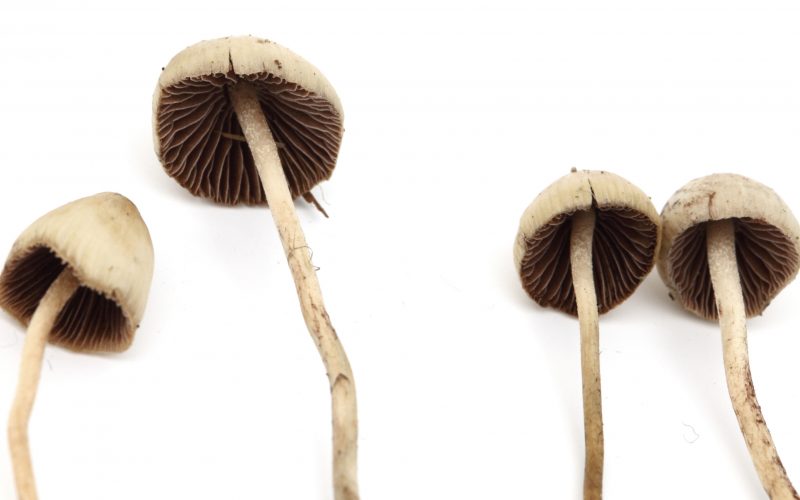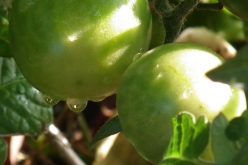
Photo Sourced from Shutterstock.com: Psilocybin mushrooms are fungi that contain the psychoactive compounds psilocybin and psilocin.
What if simple medicines existed that can provide profoundly meaningful mystical revelation and facilitate a unitive experience, leading to divine love for all? What if these powerful medicines could cure a large proportion of our psychological diseases?
What if these same medicines also facilitated profound creative inspiration not just for artists, but also important scientific and technological breakthroughs? Well, these medicines exist.
Truth demands revelation.
The reality is that countless tribes of people from every habitable continent have used entheogenic plants and fungi for religious purposes for thousands of years, and many still do. In the Rig Veda, a book dated from between 1700-1100 B.C., it is documented that ancient Hindus used and worshiped a psychedelic called Soma. In “ Persephone’s Quest” Gordon Wasson, ethnomycologist and former vice president of J.P. Morgan bank, documents a large body of evidence indicating that virtually every religious tradition has archaic entheogenic roots. Wasson, along with other Vedic and classical scholars, conclude that Soma from the Rig Veda is a psychedelic mushroom.
 Wasson also finds that the Biblical “fruit of knowledge” was very likely a psychedelic mushroom as well. There are Christian paintings over a thousand years old depicting Eve standing next to a giant mushroom with a snake wrapped around the stem. In this version, Eve feeds a piece of the mushroom to Adam.
Wasson also finds that the Biblical “fruit of knowledge” was very likely a psychedelic mushroom as well. There are Christian paintings over a thousand years old depicting Eve standing next to a giant mushroom with a snake wrapped around the stem. In this version, Eve feeds a piece of the mushroom to Adam.
John Allegro, a Harvard Scholar and Dead Sea Scroll scholar, also concludes in his book “The Sacred Mushroom and the Cross” that early Christians used mushrooms.
In another book by Wasson, “The Road to Eleusis,” evidence is presented that indicates the Ancient Greeks also used a psychedelic drink called kykeon in secretive rituals known as the Eleusinian Mysteries. Kykeon is suspected of containing the ergot fungus Claviceps purpurea, from which LSD is synthesized.
In terms of the New World, this has been and continues to be the land of the most expansive and enduring entheogen use. There are far more known psychedelic plants in North and South America than any other continent. Native Americans, including the Mayans, Aztecs and Olmecs, have a long history of religious consumption of peyote, magic mushrooms, ayahuasca, morning glory, diviner’s sage, Peruvian torch, San Pedro cactus, and others.
As for Africa, there are tribes of people from Gabon and Cameroon that continue to use a powerful psychedelic from the iboga plant. This plant is used ceremonially for religious and healing purposes by these people, but in other parts of the world many people are finding it a very powerful medicine. The compound ibogaine from this plant has been found to be a powerful treatment for drug addictions, including heroin and cocaine. Although it remains illegal in the United States, very successful addiction treatment centers are located in other countries with more intelligent drug laws.
In addition to the medical benefits of ibogaine, numerous studies from leading medical research institutions have been published recently that demonstrate extensive therapeutic value from other psychedelic compounds. Multiple studies from John Hopkins University found that psilocybin mushrooms are very medicinal in that they can improve personality by increasing openness, treat depression, help terminally ill people lose death anxiety and can induce powerful and long lasting positive spiritual benefits from mystical experiences.
Other studies find that the LSD compound can help treat alcoholism through mystical experience and cluster headaches, also known as “suicide headaches,” by unknown mechanism. Cluster headache researcher Dr. Peter Goadsby from the University of California, San Francisco stated:
headaches,” by unknown mechanism. Cluster headache researcher Dr. Peter Goadsby from the University of California, San Francisco stated:
“Cluster headache is probably the worst pain that humans experience. I know that’s quite a strong remark to make, but if you ask a cluster headache patient if they’ve had a worse experience, they’ll universally say they haven’t. Women with cluster headache will tell you that an attack is worse than giving birth. So you can imagine that these people give birth without anesthetic once or twice a day, for six, eight or ten weeks at a time … It’s just awful.”
Another interesting psychedelic molecule is known as dimethyltryptamine or DMT, and is the most powerful psychedelic known to humankind. DMT is a key ingredient in the entheogenic healing brew called ayahuasca. The ayahuasca medicine has been used by Amazonian tribes for thousands of years. What is particularly interesting about DMT is that this molecule is found endogenous in hundreds of plant and animal species, including humans. We naturally produce extremely potent and illegal psychedelic drugs inside our own brains.
In terms of scientific examination, DMT was found to be a very powerful agent for inducing profound mystical experiences in studies conducted by Dr. Rick Strassman of the University of New Mexico. In his book and the documentary “DMT: The Spirit Molecule,” Dr. Strassman discusses in great detail the astonishing results of his DMT studies.
Strassman’s findings included not only extensive evidence for spiritual, out-of-body and near-death experiences, but also many reports of communication with alien or otherworldly beings from parallel dimensions. He even concludes that DMT could be a molecule responsible for spirit or awareness, and when exogenously supplied it can provide access to additional channels of reality inaccessible to the normal mind.
The active ingredient in ecstasy, MDMA, is a primary substance of study for the Multidisciplinary Association for Psychedelic Studies (MAPS.org), which is the lead coordinator for psychedelic research. Results of these studies indicate that MDMA combined with psychotherapy was effective in treating post traumatic stress disorder (PTSD), including severe psychological traumas of war and rape. MDMA works to alleviate PTSD by reducing anxiety and increasing emotional openness.
In terms of arts and science, we owe an immense amount of gratitude to psychedelic medicines for powerfully inspiring many people. Countless artists and musicians from the 1960s onward explicitly report that these compounds synergize expanded creativity.
As for technology, a founding member of Microsoft and inventor of shareware Bob Wallace credits his success and the birth of the computer industry to psychedelic use. Wallace said, “The success in Silicon Valley in the early personal computer industry had a lot to do with people using psychedelics.” The founder and CEO of Apple Computers Steve jobs also stated, “Doing LSD was one of the two or three most important things I have done in my life.”
Kevin Herbert, an early computer scientist with Cisco Systems, finds that psychedelics help his mind overcome extremely difficult technical problems. “It must be changing something about the internal communication in my brain. Whatever my inner process is that lets me solve problems, it works differently, or maybe different parts of my brain are used,” said Herbert. He also finds that LSD “takes me to another world and into another brain state where I’ve stopped thinking and started knowing.”
Psychedelics have also been incredibly helpful in biological science as well. Two of the most important biological science breakthroughs of the last century were facilitated in part by these compounds. A 2004 Associated Newspapers of London article reported that Nobel Prize winner Francis Crick credited LSD for assisting the discovery of the structure of DNA. Nobel Prize winner Kary Mullis said LSD helped him discover polymerase chain reaction, which is one of the most fundamental tools in modern molecular genetics. Mullis stated, “What if I had not taken LSD ever; would I have still invented PCR? … I doubt it. I seriously doubt it.”
Given all this information, it is abundantly clear that these substances can be incredibly valuable for spirituality, psychology, as well as artistic and technological creativity. However, it must be noted that these substances can be dangerous if used ignorantly without guidance for safe use, such as the importance of set and setting. Although there is some risk associated with these powerful tools, this does not justify their illegality since the most dangerous drug in the world is legal.
A 2010 study published in The Lancet medical journal found that alcohol was the most dangerous drug when both harms to the individual and harms to others are examined. On a 100-point scale, alcohol rated 72 points, followed by heroin at 55, crack cocaine at 54, and methamphetamine at 33. Marijuana rated in the middle at 20, and psychedelics like MDMA, LSD, and psilocybin mushrooms were lowest, with scores of 9, 7, and 6, respectively.
The Violent Femmes once wrote a lyric saying, “America is the home of the hypocrite.” This statement is incredibly poignant considering our society says that these psychedelic medicines are “ bad” and “dangerous,” yet our downtown districts are lined with legal drug dealers selling massive volumes of the world’s most dangerous drug. Furthermore, virtually every gas station and supermarket sells another drug that kills more than 400,000 Americans per year from cancer and heart disease.
Despite the profound ignorance and fear generated by the Drug War hysteria, the truth will prevail and drug laws will evolve. The reality is that all the justifications for keeping psychedelics illegal are absolutely false. In the Controlled Substance Act, it states that these Schedule I substances are illegal because “high potential for abuse (addiction)” and there is “ no currently accepted medical use in treatment.”
Considering the science presented previously on psychedelics being powerfully therapeutic and even for addiction treatment, this law is a cruel joke.
Can you imagine what life would be like right now without human psychedelic use? The world would be a far darker place without the spiritual, artistic and scientific advances these substances fostered.











